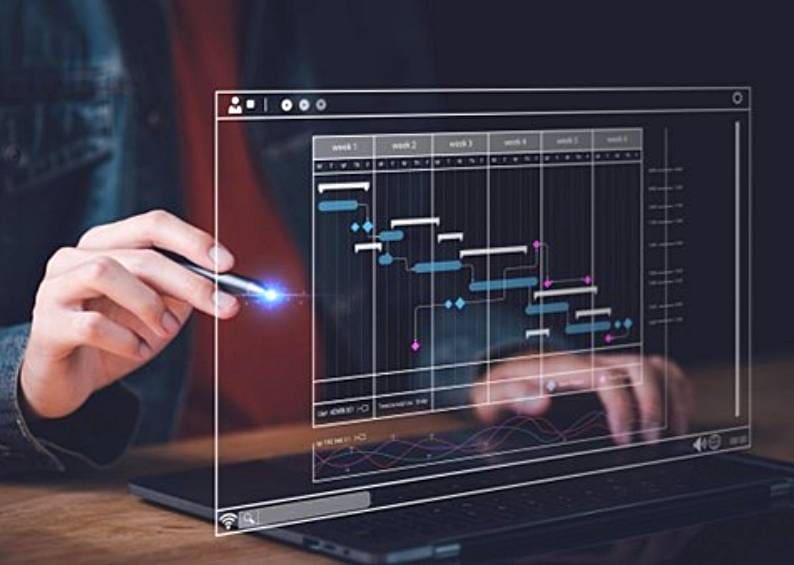words Alexa Wang
Within the ever-evolving sphere of project management, a variety of challenges frequently surface—ranging from communication pitfalls to time management hiccoughs, unclear role distributions, and the perpetual fog surrounding project priorities. Yet, standing at the forefront of today’s tech-driven era, we find ourselves armed with an array of resources capable of revolutionising our approach to these predicaments, guaranteeing the flawless execution of projects. Embark with us on a journey to explore how technology not only serves as a transformative force in overcoming common project management hurdles but also intertwines seamlessly with the realm of project management courses online, redefining the very landscape of education and execution.
1. Enhancing Communication through Collaboration Tools:
Effective project management depends on a solid foundation of seamless communication. Integrating advanced technology tools for collaboration like Slack, Microsoft Teams, Google Drive, or Asana acts as the connective structure of successful teamwork. These platforms transcend conventional communication barriers, providing team members with real-time interaction capabilities. The result is a transparent working environment where information flows effortlessly. From instant messaging to file sharing, these tools foster an environment conducive to improved teamwork and project coordination. The heartbeat of project progression lies in the synchronised rhythm of real-time communication, ensuring everyone is in harmony with project goals.
2. Streamlining Time Management with Project Management Software:
Project management software like Trello, Jira, or Monday.com optimises time, the key to project success. These digital companions can help avoid poor time management, a potential project pitfall. These platforms offer more than just a digital timeline; they provide a comprehensive suite of functionalities for task tracking, deadline management, and resource allocation. The dynamic nature of these tools ensures everyone remains on the same page, with project timelines becoming a meticulously crafted plan. From task assignments to deadline alerts, project management software transforms the abstract concept of time into a tangible, organised structure, steering projects towards success.
3. Clarifying Roles and Responsibilities with Workflow Automation:
Unclear roles within a team can act as stumbling blocks to productivity. Technology intervenes with workflow automation tools like Zapier or Microsoft Power Automate, which can redefine how processes are defined, automated, and optimised. By streamlining repetitive tasks, they eliminate ambiguity surrounding roles and responsibilities. This not only ensures a more organised workflow but also enhances overall productivity. Teams operate like well-oiled machines, with each member understanding their specific role in the larger orchestration of project tasks.
4. Establishing Clear Priorities through AI-Powered Insights:
The fog of unclear priorities dissipates with the advent of Artificial Intelligence (AI) in project management. AI tools dissect project data, extracting valuable insights that guide decision-making. By identifying trends, potential bottlenecks, and critical areas requiring attention, these tools empower project managers to establish clear priorities. This data-driven approach maximises efficiency and resource allocation, steering projects in the most strategic direction. AI becomes the guiding compass, ensuring project priorities are not based solely on educated guesswork but on informed choices backed by actionable intelligence.
5. Facilitating Seamless Collaboration with Virtual Workspaces:
In the era of remote work, the creation of virtual workspaces becomes imperative. Technologies like virtual whiteboards, video conferencing platforms (e.g., Zoom or Microsoft Teams), and cloud-based storage solutions dissolve geographical barriers. These tools facilitate effortless collaboration, fostering a sense of unity in the virtual space. The result is effective collaboration, regardless of physical location. The digital workspace becomes the nexus where ideas converge, discussions unfold, and collaborative efforts thrive, ensuring projects progress seamlessly in the digital landscape.
Conclusion
In the ever-changing environment of project management, the introduction of cutting-edge technology ushers in a disruptive era. These technical advancements do more than just solve common problems; they fundamentally change the nature of project execution. Equipped with these tools, project managers emerge as architects of precision, turning obstacles into opportunities for innovation and growth.
The integration of technology is not simply a resolution but a paradigm shift. Challenges cease to be insurmountable barriers, transforming into navigable terrains that lead to excellence. With streamlined processes, enhanced communication, and fortified collaboration, projects unfold with newfound efficiency. This article emphasises the profound impact of technology on project management, where hurdles become stepping stones and each project becomes a masterful orchestration of success in the digital age.









